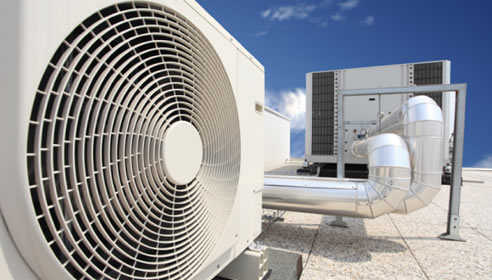Reducing Air Conditioning and Refrigeration Emissions
The Role Of Refrigeration and Air Conditioning Despite the fact that Air Conditioning and Refrigeration (HVAC&R) is an important contributor to economic performance and the quality of life its contribution to energy consumption and Greenhouse Gas Emissions (GHG) is broadly misunderstood and understated. The industry makes a central contribution to fundamental industries including the built environment, food and pharmaceutical production and distribution, healthcare and hospitality and virtually all other human activities; effectively everyone, everywhere. The importance of the HVAC&R industry in Australia is demonstrated by the following statistics¹:
The industry offers major sources of energy efficiency and the resulting cost savings. The ARA believes Australia has the opportunity to reduce the energy cost of HVAC&R infrastructure by 60/70% over the next 15 years, a saving of $8/10 Billion PA.
The Role of International Agreements on Refrigerants The implication is that the use of High GWP synthetic refrigerants will be dramatically reduced over the next fifteen years. This will require replacement of a large proportion of HVAC&R infrastructure because low GWP refrigerant-based technology requires new HVAC&R equipment. As a result Original Equipment Manufactures (OEMs) worldwide are transitioning to Low GWP refrigerant equipment development and production - now. The Low GWP refrigerants include the Natural Refrigerants (ammonia, carbon dioxide and hydrocarbon refrigerants) and low GWP synthetic refrigerants (HFOs). Both Natural Refrigerants and low GWP synthetic refrigerants are more energy efficient than High GWP synthetic refrigerants. Natural refrigerant - based technologies have been embraced in every sector of the HVAC&R industry to the extent that major multinational suppliers, end user organisations and governments now promote their use. For instance the Consumer Goods Forum representing over four hundred of the world's leading multinational food retailers and food suppliers are now calling for all HVAC&R applications to use Natural Refrigerants.
HVAC&R Energy Efficiency Whilst the capital cost of Low GWP refrigerant technology will tend to be higher in the short term it is the energy efficiency of this technology that will deliver major cost savings over the life of the equipment. Whilst the transition to Low GWP refrigerant technology is commercially warranted it requires HVAC&R specifiers to be aware of the sources and management disciplines required. The use of Life Cycle Costing and increased Life Cycle Management of HVAC&R equipment is fundamental to enabling HVAC&R energy efficiency to be fully realised. Only through the use of Life Cycle Costing will the cost savings of energy efficient Low GWP refrigerant technology be fully appreciated. Only through the use of Life Cycle Management systems will the energy efficiency of Low GWP refrigerant technology deliver the optimal degree of energy efficiency of HVAC&R equipment. The sources of HVAC&R energy efficiency include both the mechanical devices that use Low GWP refrigerants and the use of integrated heat load management systems spanning the full range of methods for reducing the energy demand for heating and cooling. These include the many ways to reduce the temperature change required of HVAC&R equipment like control systems, greater use of insulation systems like double glazed windows, reflective paints and low heat lighting. It is fundamental that HVAC&R specifiers recognise and deliver integrated energy efficiency solutions that optimise HVAC&R energy efficiency.
HVAC&R GHG Emissions The energy consumption of the HVAC&R industry (indirect emissions) is extremely high (22.3% of electricity use, about 10% of national emissions) reflecting the many operating systems and their continuous use. It is direct emissions that are little understood and pervasively misrepresented. The Australian national accounts report refrigerant emissions to be about 1% of national emissions. This understates the volume of direct emissions for a series of reasons that defy logic and give rise to a great deal of misunderstanding; principally the failure to include High GWP ozone depleting refrigerant emissions in Kyoto accounting. The real impact of the HVAC&R industry in Australia is in the order of 14% of national emissions. This is comprised of 10% of national emissions due to energy consumption and 4 % due to unintentional and intentional High GWP synthetic refrigerant emissions. This understatement matters a great deal. It has the effect of failing to recognise HVAC&R as a primary potential source of emissions reduction. It has the effect of failing to recognise that there are solutions available in Natural Refrigerants for which direct emissions would be minimal because their GWP is negligible compared to High GWP synthetic refrigerants. Because the Natural Refrigerants are highly energy efficient their use will contribute to reduced indirect emissions. The use of Natural Refrigerants will eliminate direct GHG emissions and reduce indirect emissions by up to 50%, a potential total reduction in national emissions of 7%. The use of integrated energy efficiency solutions in association with high efficiency HVAC&R equipment has the potential to further reduce total energy consumption and indirect emissions.
ARA HVAC&R Energy Efficiency Seminars
¹ Cold Hard Facts 2, Dept of the Environment, 2013 (A taxonomy of the HVAC&R industry)
|
07 5593 5433 5 Marks Drive, Varsity Lakes, QLD, 4227
|




 Refrigeration and Air Conditioning
Refrigeration and Air Conditioning Forging the Future for Refrigeration and
Forging the Future for Refrigeration and ARA HVACR Energy Efficiency Seminar 2016
ARA HVACR Energy Efficiency Seminar 2016 ARA Submission to the OPSGG MA Review in
ARA Submission to the OPSGG MA Review in HVACR Energy Efficiency Seminar Series
HVACR Energy Efficiency Seminar Series
